5 Mythological Superheroes Who Could Star in Marvel Movies
Superheroes are nothing new, they were praised throughout antiquity. We present 5 Goddesses who could be the next movie legends!
Candy Bedworth 27 June 2024
You have probably heard about the great Marie Curie, but how many women scientists could you list to your friends beyond her? Let’s discover 10 formidable women in science who have revolutionized the world. Tales of determination and the quest for a better world.
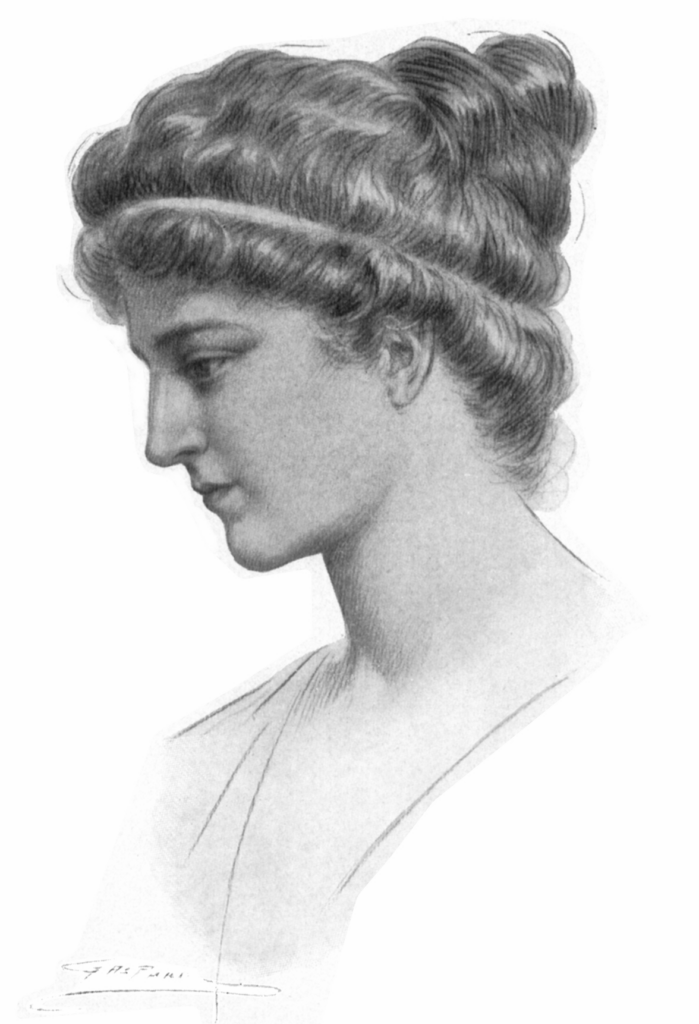
Women in Science: Jules Maurice Gaspard, Portrait of Hypatia, 1908. Wikimedia Commons (public domain).
Hypatia was born around 360 CE in Alexandria, Egypt. She has been a mathematician, philosopher, and astronomer. She stood as one of the few women scholars of her time, thriving in a male-dominated society.
Thanks to her brilliance, Hypatia became head of the Platonist school and her expertise and eloquence garnered admiration and respect from scholars far and wide. Beyond her scholarly pursuits, Hypatia embodied intellect and independence, advocating for rationality and knowledge in a time of political and social turbulence. Her tragic death in 415 CE marked the silencing of a pioneering voice in science and philosophy.
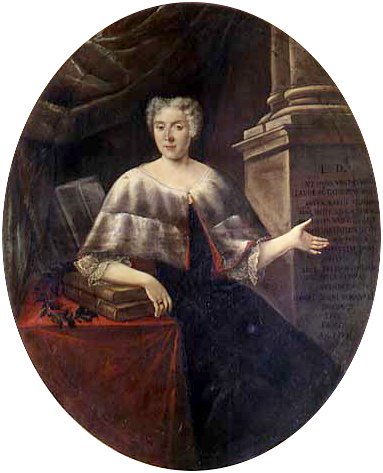
Women in Science: Carlo Vandi, Portrait of Laura Bassi, ca. 1750, Museo di Palazzo Poggi, Bologna, Italy.
Laura Bassi, born in 1711, was one of the first female physicists in Europe. Her brilliance shone through as she obtained a doctorate in philosophy at the University of Bologna in 1732, becoming the first woman in the world to do so.
Bassi’s expertise in Newtonian physics and her eloquence as a lecturer earned her widespread recognition. She became a professor of physics at the University of Bologna, making history as the first female to hold such a position in a European university.
Beyond her outstanding academic achievements, Bassi was a role model, paving the way for future generations of women in science. Her legacy remains a testament to determination, intellect, and the power of breaking barriers, inspiring countless individuals to pursue their passions against societal and cultural biases.
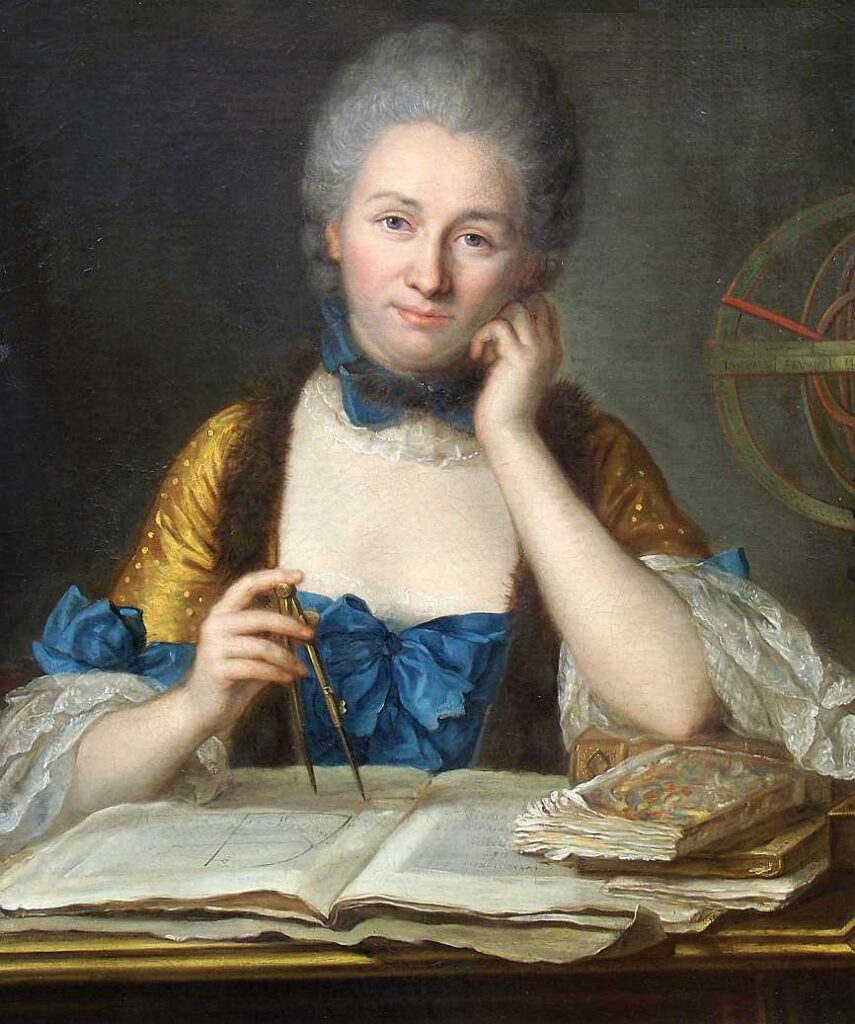
Women in Science: Maurice Quentin de La Tour, Madame Du Châtelet at Her Desk, 18th century, private collection. Wikimedia Commons (public domain).
Émilie du Châtelet, born in 1706, was a luminary of the Enlightenment era, distinguished for her contributions to mathematics, physics, and philosophy. Du Châtelet’s most renowned work includes her translation and commentary on Isaac Newton’s Principia, which significantly contributed to the understanding of Newtonian physics in France. Her insights and explanations played a pivotal role in popularizing Newton’s work in Europe.
A woman ahead of her time, Du Châtelet’s dedication to academia was exceptional. She engaged in debates with leading intellectuals, including Voltaire, and delved into complex mathematical and scientific inquiries, all while navigating societal constraints imposed on women in the 18th century.
Tragically, her life was cut short at the age of 42. She inspired future generations of scientists and thinkers to challenge conventions and pursue knowledge.

Women in Science: Melchior Gommar Tieleman, Portrait of Caroline Herschel, 1829. Wikimedia Commons (public domain).
Caroline Herschel, born in 1750, was a pioneering astronomer. Initially overshadowed by her brother William Herschel, a renowned astronomer, Caroline’s passion for the stars led her on an extraordinary journey in the field of astronomy.
Despite her early life primarily dedicated to household duties, her determination and curiosity for the Universe persisted. Supported by her brother, she delved into astronomy, becoming the first woman to discover a comet in 1786. Her dedication and meticulous observations earned her recognition, leading to her appointment as William’s assistant.
Caroline’s contributions extended beyond the discovery of comets. Her comprehensive cataloging of star clusters and nebulae significantly advanced astronomical understanding during the 18th century. She became the first woman to receive a salary for scientific work, paving the way for future generations of women in astronomy.
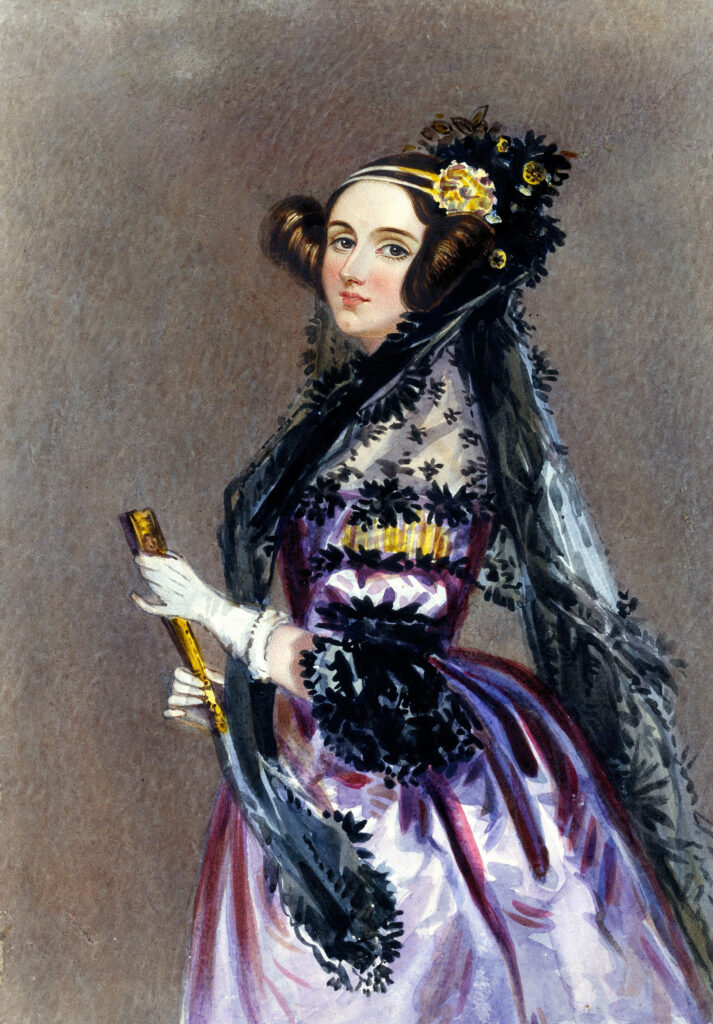
Women in Science: Alfred Edward Chalon, Portrait of Ada Lovelace, ca. 1840, Science Museum Group Collection, London, UK. Wikimedia Commons (public domain).
Ada Lovelace, born in 1815, had been a pioneering mathematician and visionary in the domain of computer science. As the daughter of poet Lord Byron, she displayed exceptional talent in mathematics and logic, nurtured by her mother to counteract her father’s artistic influence. Collaborating with Charles Babbage, Lovelace translated and annotated an article on Babbage’s Analytical Engine. Her extensive notes included an algorithm for calculating Bernoulli numbers, earning her the title of the world’s first computer programmer.
Lovelace envisioned the Analytical Engine‘s potential far beyond calculations, foreseeing its capability to process symbols and create music, art, and more. Her insights set down the foundation for modern computing, emphasizing the machine’s capacity for much more than pure mathematical computations.
Despite societal norms restricting women’s intellectual pursuits, Lovelace’s foresight and contributions to computing grew fast, leaving an indelible mark on the field. Her work has been an inspiration for generations of computer scientists, emphasizing the interdisciplinary nature of technology and its vast creative potential.
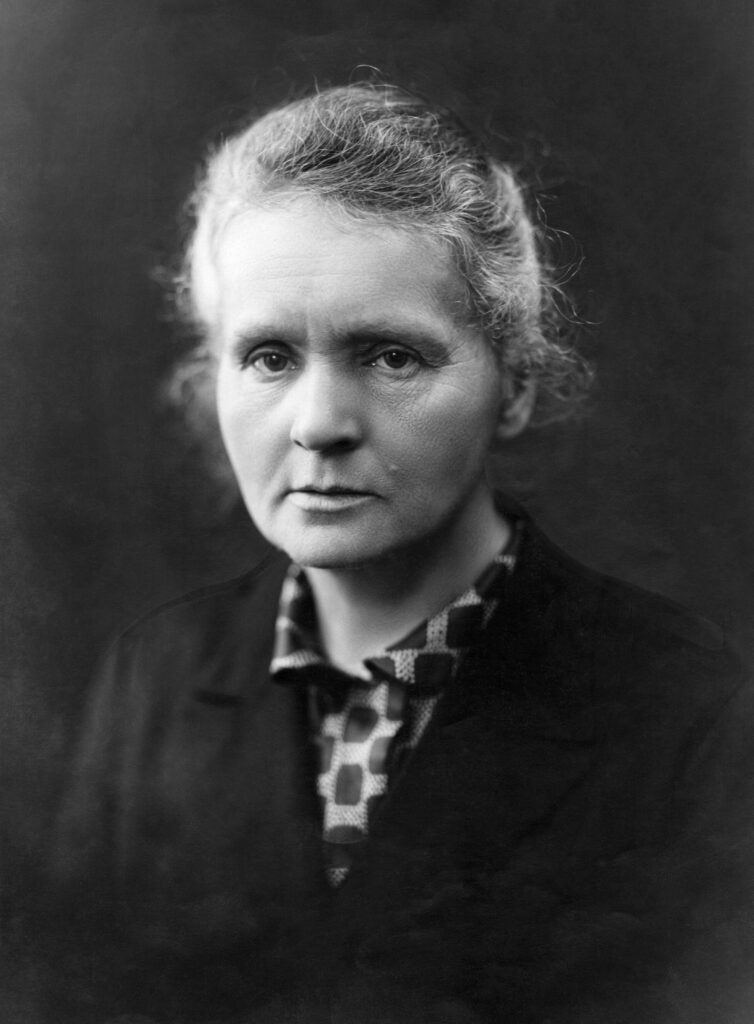
Women in Science: Henri Manuel, Maria Skłodowska-Curie, ca. 1920. Wikimedia Commons (public domain).
Maria Skłodowska-Curie, known as Marie Curie, born in 1867, is an iconic figure in science, known for her groundbreaking research in radioactivity. An innovator in her field, she shattered gender barriers in science, becoming the first woman to win a Nobel Prize and the only person to win Nobel Prizes in two different scientific fields: Physics and Chemistry.
Curie’s tireless dedication to science led to the discovery of two new elements, polonium, and radium. Her pioneering work in radioactivity not only revolutionized scientific understanding but also paved the way for advancements in medical treatments like radiation therapy. Despite facing immense societal challenges as a woman in science, Curie persisted, demonstrating extraordinary resilience and intellect. Alongside her scientific accomplishments, she actively advocated for the application of scientific discoveries for the good of humanity.
Marie Curie’s legacy transcends her scientific achievements; she stands as an inspiration for aspiring scientists—especially women—symbolizing perseverance, brilliance, and a firm commitment to the pursuit of knowledge, leaving a persistent impact on the scientific community and the world at large.
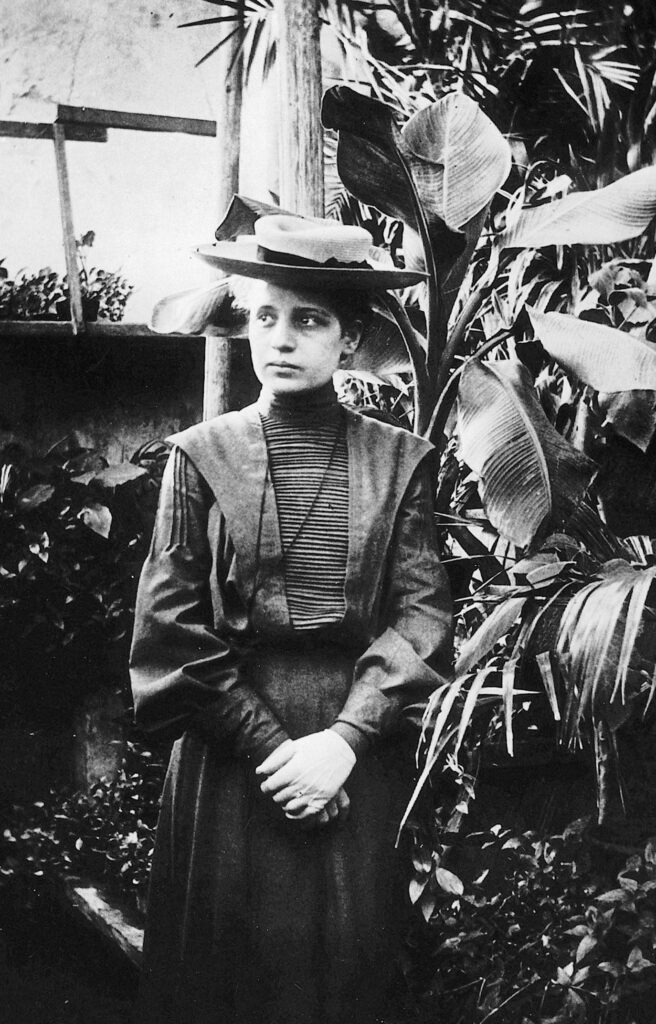
Women in Science: Lise Meitner around 1906 in Vienna, 1906. Wikimedia Commons (public domain).
Lise Meitner, born in 1878, was a physicist who made groundbreaking contributions to nuclear physics. Her most notable discovery was the explanation of nuclear fission. Together with Otto Hahn, she elucidated the process by which atomic nuclei could split, crafting the foundation of nuclear energy and subsequent advancements in atomic physics.
Meitner’s exclusion from the Nobel Prize for the discovery of nuclear fission remains a point of controversy. However, her contributions to the field were widely recognized, and she received numerous awards and honors later in her life.
Beyond her scientific achievements, Meitner’s integrity, perseverance, and dedication to physics serve as an inspiration for women in Science, Technology, Engineering, and Mathematics (STEM).
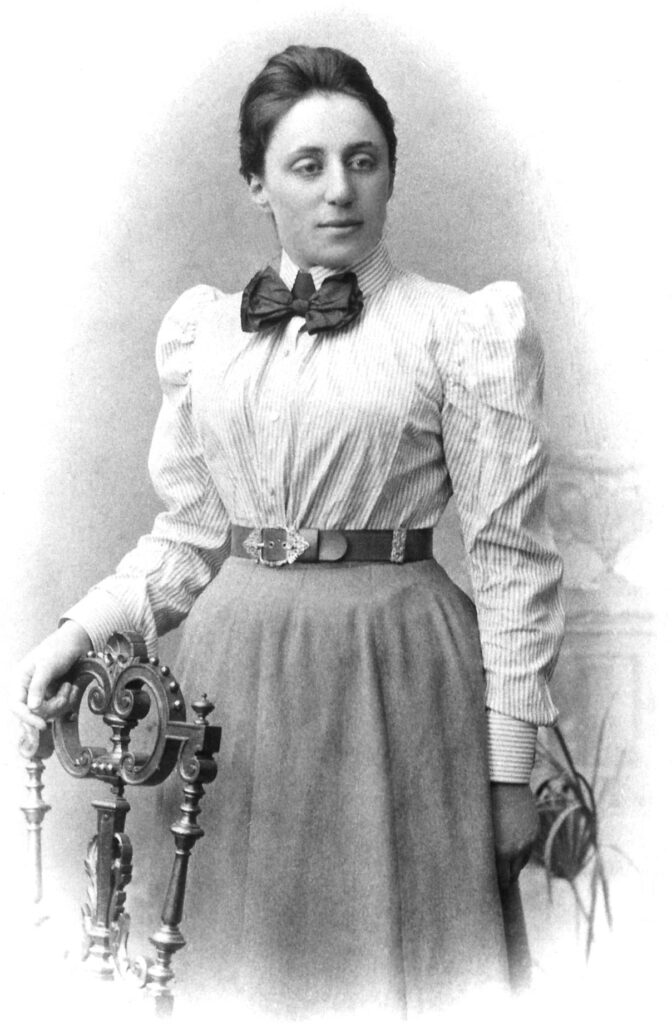
Women in Science: Portrait of Emmy Noether, ca. 1900. Wikimedia Commons (public domain).
Emmy Noether, born in 1882, was a mathematician whose work revolutionized abstract algebra and theoretical physics. Noether’s most influential contribution is her development of Noether’s theorem, a fundamental concept in theoretical physics linking symmetries and conservation laws. Her theorem formed the basis for understanding the fundamental principles governing the Universe, profoundly impacting fields like quantum mechanics and general relativity.
Her academic career faced challenges due to anti-semitic policies in Germany, yet she persisted in her research and teaching. Noether found refuge in the United States, where she continued her formidable work and became a prominent figure at Bryn Mawr College. She inspired mathematicians and physicists alike. Her contributions had a profound impact on the foundations of modern physics and mathematics.
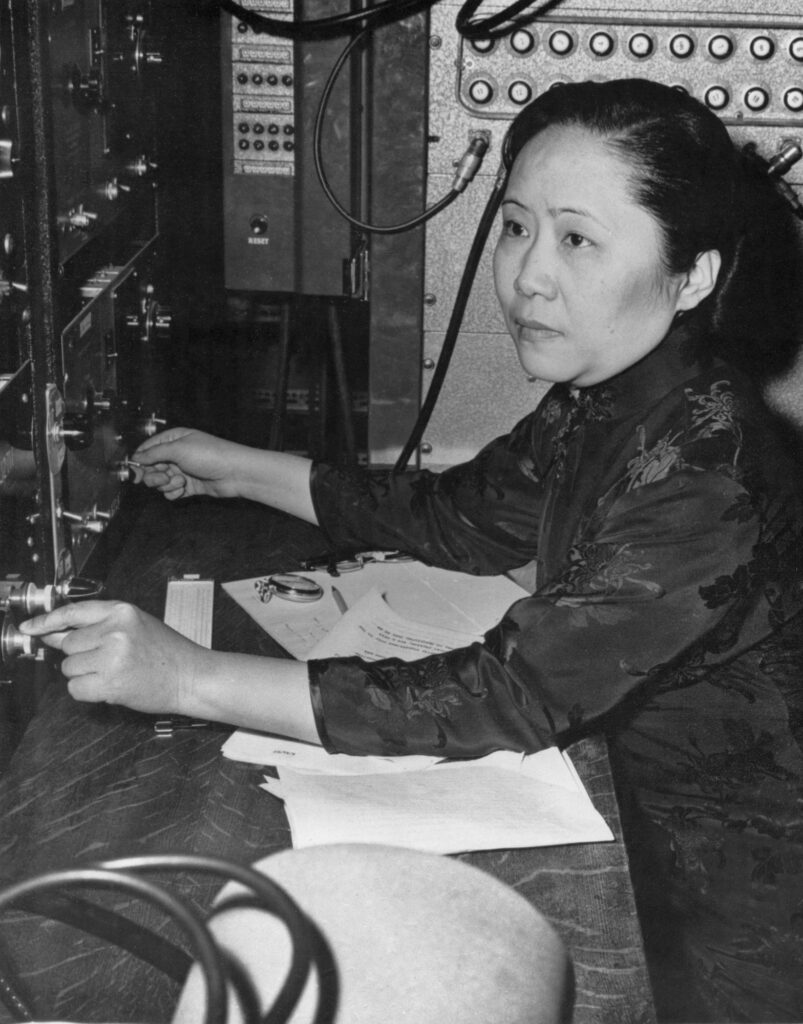
Women in Science: Chien-Shiung Wu, 1920s–1970s, Smithsonian Institution Archive via Wikimedia Commons (public domain).
Chien-Shiung Wu, born in 1912, was a pioneering experimental physicist. Often referred to as the First Lady of Physics, her most notable achievement was the experimental confirmation of the theoretical prediction of the asymmetry in the weak nuclear force, known as the Wu Experiment or the Beta Decay Experiment.
Despite facing discrimination and being initially overlooked for recognition, Wu’s contributions earned her numerous honors, including the Wolf Prize in Physics. She stands as an inspiration for women and minorities in STEM fields.
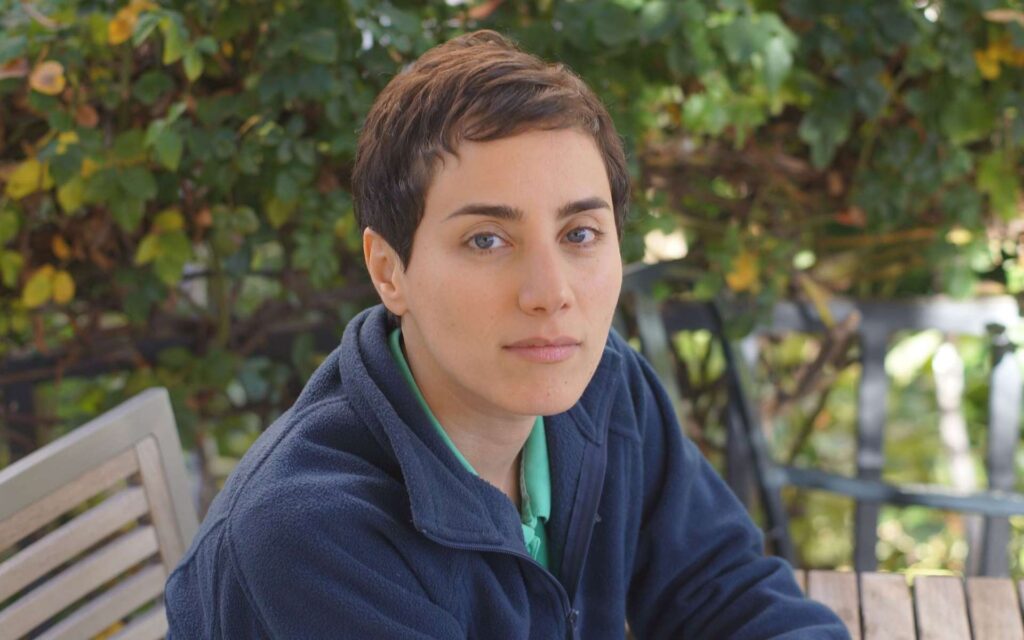
Women in Science: Maryam Mirzakhani, 2014. Wikimedia Commons (CC-BY-4.0).
Maryam Mirzakhani, born in 1977, was an exceptional mathematician whose brilliance reshaped the field of mathematics, particularly in the study of complex geometric shapes and their dynamics. As the first woman and the first Iranian to receive the Fields Medal, her achievements made an indelible mark on the world of mathematics.
Mirzakhani’s innovative approaches and unique insights led to profound advancements in the study of Riemann surfaces and their moduli spaces. Despite the barriers faced by women in mathematics and her battle with cancer, her humility, creativity, and perseverance in tackling some of the most intricate mathematical problems earned her international acclaim and admiration.
Mirzakhani’s impact continues to resonate across the mathematical community and beyond, not to mention her role in inspiring women in mathematics, emphasizing the power of intellectual curiosity, innovation, and resilience.
Lars Jaeger: Women of Genius in Science, 2023, Springer.
Elena Favilli, Francesca Cavallo: Good Night Stories for Rebel Girls, 2016, Rebel Girls.
DailyArt Magazine needs your support. Every contribution, however big or small, is very valuable for our future. Thanks to it, we will be able to sustain and grow the Magazine. Thank you for your help!